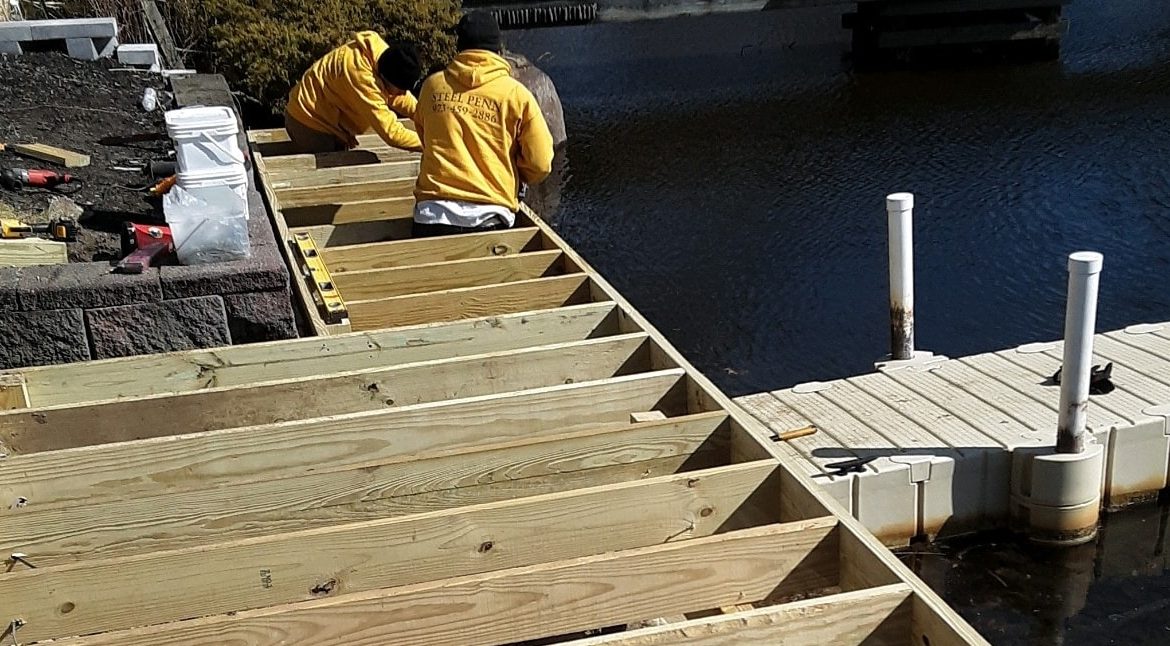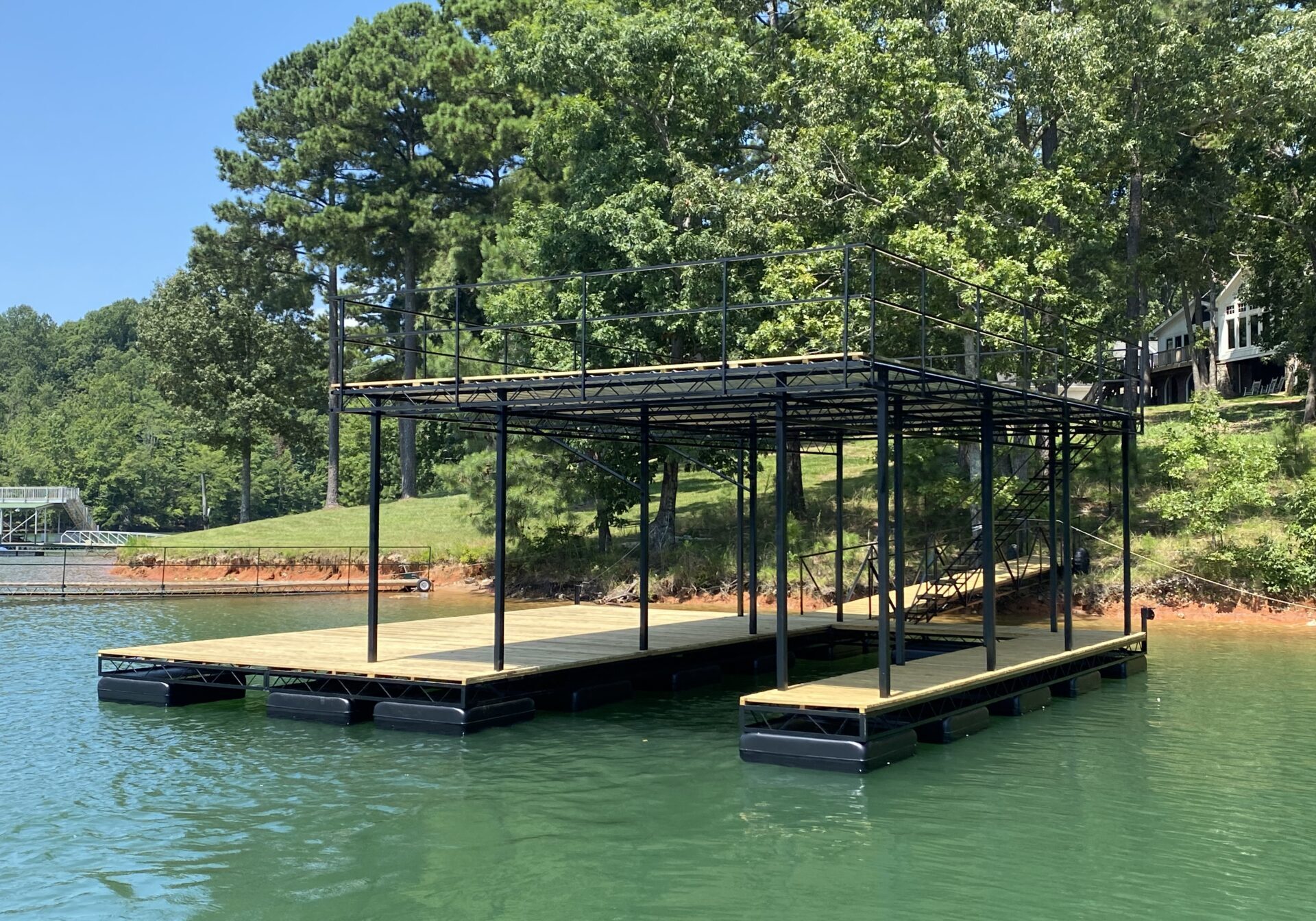Expert Insights on Durable Dock Repairs Solutions
Expert Insights on Durable Dock Repairs Solutions
Blog Article
Effective Dock Repair Work Techniques: Guaranteeing Structural Stability
Making sure the structural stability of docks through effective fixing strategies is extremely important for the long life and safety and security of aquatic centers. This includes a multi-faceted strategy beginning with detailed evaluations utilizing advanced technologies like finder tools and remotely ran lorries (ROVs) to find both noticeable and hid damages. Subsequently, picking the ideal repair work materials, such as corrosion-resistant alloys and composite materials, is vital for toughness. Structural reinforcement approaches, including the implementation of cross-bracing systems and load-distribution plates, play an essential function in mitigating stress factors. The significance of these strategies becomes noticeable when checking out advanced fixing techniques and preventative upkeep techniques.
Evaluating Dock Damage
Analyzing dock damage is an essential initial step in ensuring the structural stability and safety of any docking center. This first evaluation includes a detailed examination to recognize both noticeable and hidden problems. Key elements to analyze include the dock's foundation, pilings, decking, and hardware. Each element has to be scrutinized for signs of wear, rot, corrosion, or other forms of deterioration that can endanger the architectural honesty.
Architectural engineers or qualified inspectors generally carry out these assessments using specialized strategies and devices. As an example, underwater evaluations might employ sonar tools or from another location ran automobiles (ROVs) to discover submerged damage. Over water, aesthetic assessments are matched by utilizing moisture meters and various other diagnostic tools to reveal underlying problems not instantly visible to the naked eye.

Choosing Repair Service Materials
Picking the appropriate repair work materials is an essential step in the dock restoration procedure, one that straight influences the durability and performance of the repaired structure. Material option should be driven by variables such as environmental problems, load-bearing needs, and compatibility with existing dock components. As an example, wood is a typical selection for docks because of its all-natural resilience and visual appeal. Nonetheless, picking the right type of wood, such as pressure-treated lumber or normally rot-resistant types like cedar or teak, is vital to hold up against water settings.
Along with wood, composite materials are increasingly popular due to their durability and reduced upkeep demands. Composites, typically made from a mix of plastic and timber fibers, supply exceptional resistance to rot, pests, and UV damages. For steel docks, picking corrosion-resistant alloys such as galvanized steel or marine-grade aluminum is vital to prevent corrosion and ensure structural integrity in saline water conditions.
Epoxy materials and marine-grade sealants are important for fixing splits and sealing joints, providing a waterproof obstacle and improving the dock's total strength. By thoroughly choosing high-quality materials, dock repair work can attain durable results, therefore securing against future destruction and guaranteeing secure, reputable usage.
Structural Support Strategies
Effective architectural support methods are important in ensuring the security and long life of dock repair work. One fundamental technique involves using steel or composite reinforcement bars (rebar) within concrete structures. Rebar supplies additional tensile stamina, avoiding cracks and distributing tons a lot more evenly. This method is particularly effective for docks subjected to heavy lots or severe environmental problems.
Another crucial method is the application of Home Page fiber-reinforced polymers (FRP) These products provide high strength-to-weight proportions and outstanding resistance to deterioration, making them ideal for enhancing concrete or wooden anchors. FRP can be used in strips or sheets and adhered with epoxy resins to boost architectural stability.
Supporting and anchoring systems likewise play an important duty in structural support. Cross-bracing, making use of metal or wooden beam of lights, can counteract side pressures, reducing swaying and movement. Securing systems, such as helical piers or driven stacks, offer a steady foundation by transferring loads to deeper, much more steady dirt layers.
Finally, the integration of load-distribution plates can assist distribute weight much more link evenly throughout the dock's surface, reducing local stress points. These strategies jointly ensure that docks stay secure and durable, capable of enduring the rigors of their functional setting.
Advanced Repair Service Techniques

An additional advanced technique includes undersea welding, which allows for repair services to be carried out without the requirement to dewater the location. This approach is particularly beneficial for addressing architectural concerns in immersed dock parts, guaranteeing very little disturbance to operations. Boosted welding techniques, paired with robot systems, provide accuracy and reliability, thus extending the lifespan of the dock.
In addition, cathodic defense systems are applied to protect against deterioration in metal dock structures. By using sacrificial anodes or pleased present systems, these methods successfully reduce the electrochemical procedures that bring about material degeneration.
Lastly, progressed surveillance modern technologies, such as architectural wellness tracking (SHM) systems, supply real-time data on the condition of dock frameworks. These systems enable positive maintenance and timely treatments, ultimately guaranteeing the lasting structural honesty of the dock.
Maintenance and Avoidance
Upkeep and prevention are basic ideas that underpin the longevity and security of dock structures. Normal inspections are vital, permitting very early discovery of damage, possible weak points, and environmental influences. A proactive technique, entailing routine look for rust, rot, and architectural shifts, minimizes expensive repairs and prolongs the dock's operational life.
Preventive measures need to include using protective coverings click to read more to metal components to defend against rust and utilizing cured timber to stand up to degeneration. In addition, guaranteeing proper drain and ventilation can stop water buildup, which is an usual root cause of architectural degradation. Including quality products and sticking to maker standards throughout building and fixing phases also play crucial duties in improving toughness.

Educating workers in dock upkeep ideal methods guarantees constant application of preventative steps. Leveraging technological developments, such as drones for examinations and sensors for real-time tracking, can additionally boost upkeep initiatives. By prioritizing maintenance and avoidance, dock owners can guarantee structural integrity, operational safety and security, and affordable management over the dock's life expectancy.
Verdict
To conclude, maintaining the structural integrity of aquatic centers demands thorough dock repair strategies. Complete assessments using advanced devices reveal both noticeable and concealed problems, while the selection of suitable repair service products improves longevity. Executing architectural reinforcement techniques addresses tension points efficiently. Advanced repair work strategies, coupled with routine upkeep methods, make certain the dock stays risk-free and operational under varied environmental conditions. Taking on these methods considerably lengthens the life expectancy and capability of marine infrastructure.
Making sure the architectural stability of docks with reliable repair service strategies is paramount for the longevity and safety of marine facilities.Choosing the ideal fixing products is an essential step in the dock restoration procedure, one that straight affects the durability and performance of the fixed framework.Reliable structural reinforcement techniques are crucial in ensuring the stability and long life of dock repairs. By prioritizing maintenance and prevention, dock proprietors can make sure structural honesty, functional safety and security, and affordable administration over the dock's life expectancy.
In conclusion, maintaining the architectural integrity of marine centers necessitates detailed dock fixing methods.
Report this page